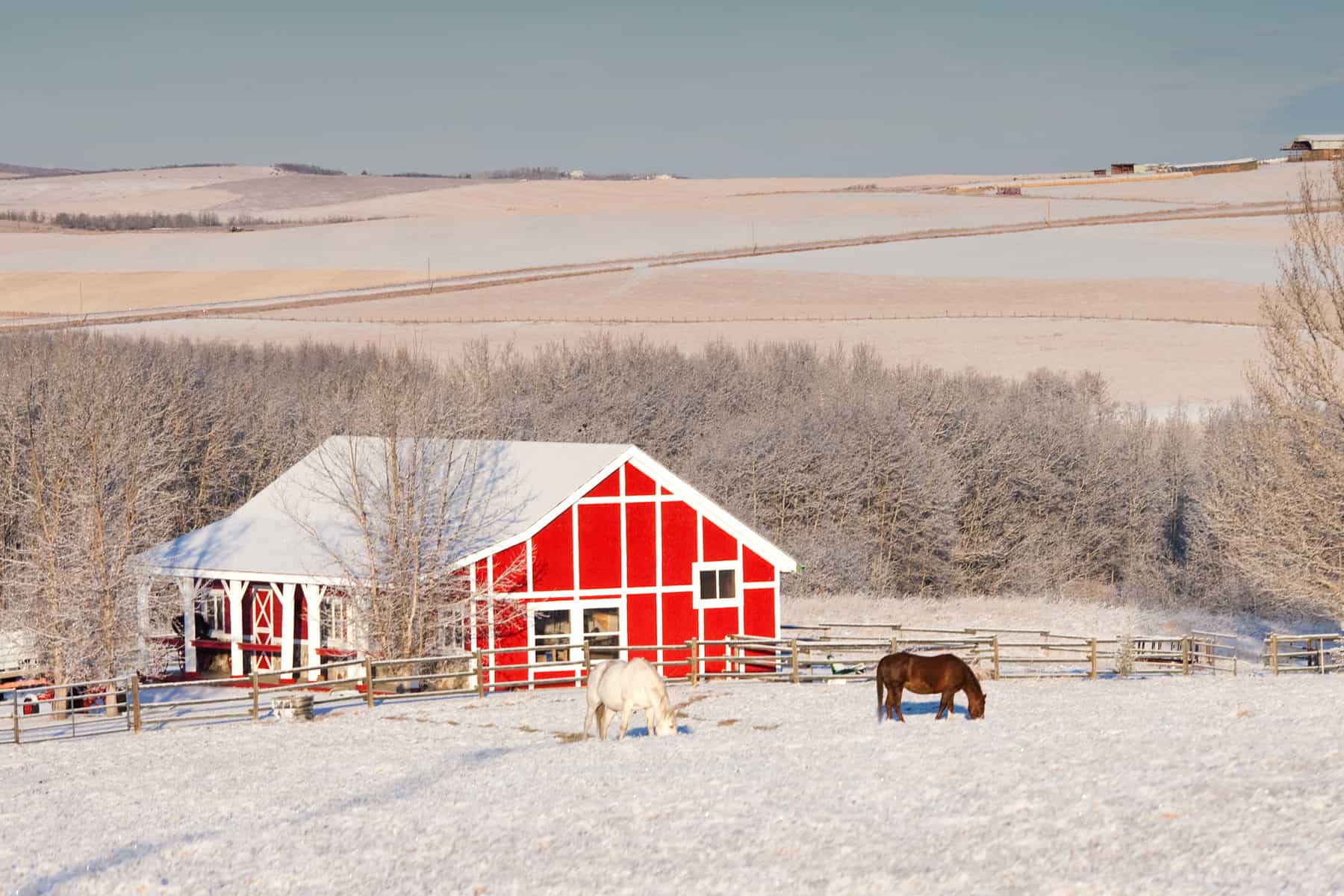Tips for Managing Horse Barns During Winter

In many states, snow and winter go hand in hand. Unfortunately, the freezing temperatures that accompany them can lead to some serious problems for the horse owner: frozen water pipes, slippery turnout conditions, and even building collapse.
But Jenifer Nadeau, MS, PhD, a University of Connecticut equine extension specialist, and Larry D. Jacobson, MS, PhD, of the University of Minnesota, say horse owners and farm managers can take certain steps to make their barns and other structures safe from winter’s fury.
“Before winter arrives, ensure that any new roof has been built according to the building code, the roof is structurally sound, has its shingles intact so that they do not blow off creating leaks or a danger to animals, and consider installation of snow slides that can help remove snow,” Nadeau said, adding that while a snow slide might scare the horses at first, it will prevent the snow from building up on the roof.
“In an area housing horses, we need to have minimum amount of airflow to maintain good air quality year round,” Jacobson said. “That’s the only way to remove excess moisture from the barn and keep the barn free of gasses, like ammonia.” Excess moisture can weaken wooden structures.
“Also, keep gutters clean and free of debris to prevent ice buildup leading to ice dams and roof damage,” Nadeau added.
She also suggests having an evacuation plan and practicing what to do in the event of a roof collapse.
Once winter has arrived, Nadeau said, “keep drives clear of snow so that emergency vehicles can access the property.” She added that walkways for both humans and horses should be kept free and clear of ice and snow accumulation.
“Typically the snow load isn’t too much of a problem for buildings with metal roofs because it tends to slide off when the temperature warms up a little,” Jacobson said, adding that it’s common for snow to only remain on a roof for a few days. “There might be some situations where we get freezing rain and the snow falls on top of that, but that will also slide off when it gets a little warmer.
“But most structures are safe for 20 to 25 pounds of snow loading per square foot, with some of the newer constructions being good for probably 30 to 35 pounds per square foot,” he continued, noting that buildings in warmer climates might have a lower snow tolerance than those built in northern climates that receive a large amount of snow each year. He said it would take “several feet of snow” to approach the limits in northern barns.
Both Nadeau and Jacobson suggest having professionals remove snow from the roof if concern arises that it might be at risk for collapse. Visual changes in the structure and cracking or squeaking noises might indicate the roof is under stress, said Jacobson.
Jacobson noted that the buildings typically at greatest risk of suffering a collapse are ones with large spans between supports, such as indoor arenas.
Farm managers and owners should assure that unfrozen water sources are available throughout the winter in case of a barn fire.

Written by:
Erica Larson
Related Articles
Stay on top of the most recent Horse Health news with















